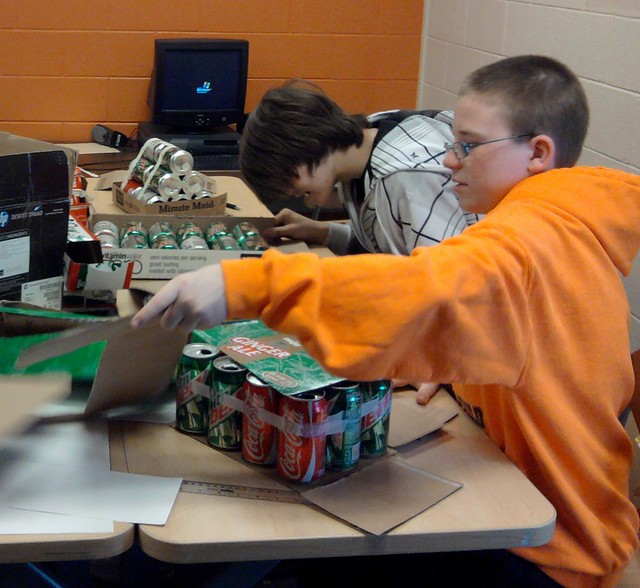 |
| @AlexKraker |
Teaching Philosophy
The teacher should be a beacon of knowledge, like a lighthouse, whose sole purpose is to shine their all-knowing cone of light round and round to each student and burn the desired and necessary knowledge into the eyes and brains of students. The teacher holds all of the knowledge and it is their job to dole out the material and skills that are “necessary” to the students. Nobody shall get to the knowledge, except through the teacher.
It seems as though too often we as society, parents, and even students fall into the trap of believing that nonsense in italics. The job of a teacher is not to teach at all; to me it seems like such a misnomer. When I consider what I need to, want to, and should be doing as a teacher, I feel like I am much more of a facilitator than a teacher. I don’t want to be standing up in the front of the classroom mindlessly droning on about what a y-intercept is…that’s not my job! My job is to be on the front lines, fielding questions, guiding inquiries, and motivating students to discover and learn all these new, wonderful ideas that they have yet to encounter. I should be much less of a teacher and more of a tour guide. I should be pointing out things that students may not have noticed, give ideas on what they could try to help solidify understanding, and challenging them to do, not just learn.
I feel as though students do not learn well when someone is just imparting knowledge to them. Lectures are boring. Students struggle to pay attention and get all of the material when it is just being thrown at them. The best learning comes when students get their hands dirty. When they’re given a question they can’t yet solve. When they have to think about what they already know and how they can use it to find out what they need to know, that’s when learning occurs. I believe learning is not a linear process. Acquiring new knowledge always seems to come first, but that’s not real learning. Learning occurs when we assimilate our knowledge, make connections, and understand what we just found out. Learning is so much more than just finding something out that we didn’t previously know. It is a process, we acquire new knowledge, and build upon that. Then once we are comfortable with what we have just figured out, we build more on that, so on and so forth until we go from just a few simple ideas to a whole web of knowledge, connections, ideas, and discoveries. That whole process is learning, and that web represents our progress.
There are a few necessary components to learning. I feel in order for learning to occur, students have to be engaged, involved in discovery, and entertained. I’m not trying to say school always has to be fun, but it is so much more difficult to forget something that you enjoyed being a part of discovering. And when you realize how you discovered it, you can go back through that process and discover it again if you forget specific facts. Memorizing formulas for the volume of three dimensional figures isn’t learning. Using manipulatives and two dimensional formulas to figure out how we derive the three dimensional ones leads to students being able to rediscover the exact formulas themselves if they forget what exact numbers we use. It is my job as a “teacher” to help students understand why. However, my job doesn’t stop there, it doesn’t even start there. I have to help them care; see why it’s important, how we use our material and how it can help them. I need to help them figure it out, answer questions, guide thinking and discussion, encourage participation. I have to help them sort out what they just answered, see where it comes from, how it connects and what it can do for them. My job is not to impart knowledge, but to feed the desire to learn and know.
As such, I must always be thinking of new ways to inspire, motivate and make students care. I must identify areas where they may struggle, or things that can cause roadblocks in our journey to know more. I have to be prepared for anything and everything and really know my students. My job should never be the same from year to year. I need to constantly adapt to my students. I need to learn how they learn, know what they know, struggle to find where they will struggle. Different students will need different types of instruction. Leading them to discoveries will work well for some students, but other students may struggle with seeing connections between what we are doing and why it is important. For some students, I will have to take a more direct approach. I will have to simply teach them some things, and work on making connections once they feel comfortable with the material. Not every student will be motivated, so I will have to find a way to motivate them outside of grades or the simple pursuit of knowledge. Sometimes I will have to simply fall back on the old expectations of a teacher, and I will have to lecture on occasion. However, it is my job to never fall back on lecturing and simply trying to force the knowledge from my head to theirs.
I want to shake things up. I want my students to look forward to my class. I want my students to feel like they are teaching themselves, like they are the catalyst for their learning. I am looking forward to the challenge, and I am up to the task. My teaching philosophy is that I am not a teacher, but so much more.
Image credits: ~John~ & JTKnull @ Flickr




















